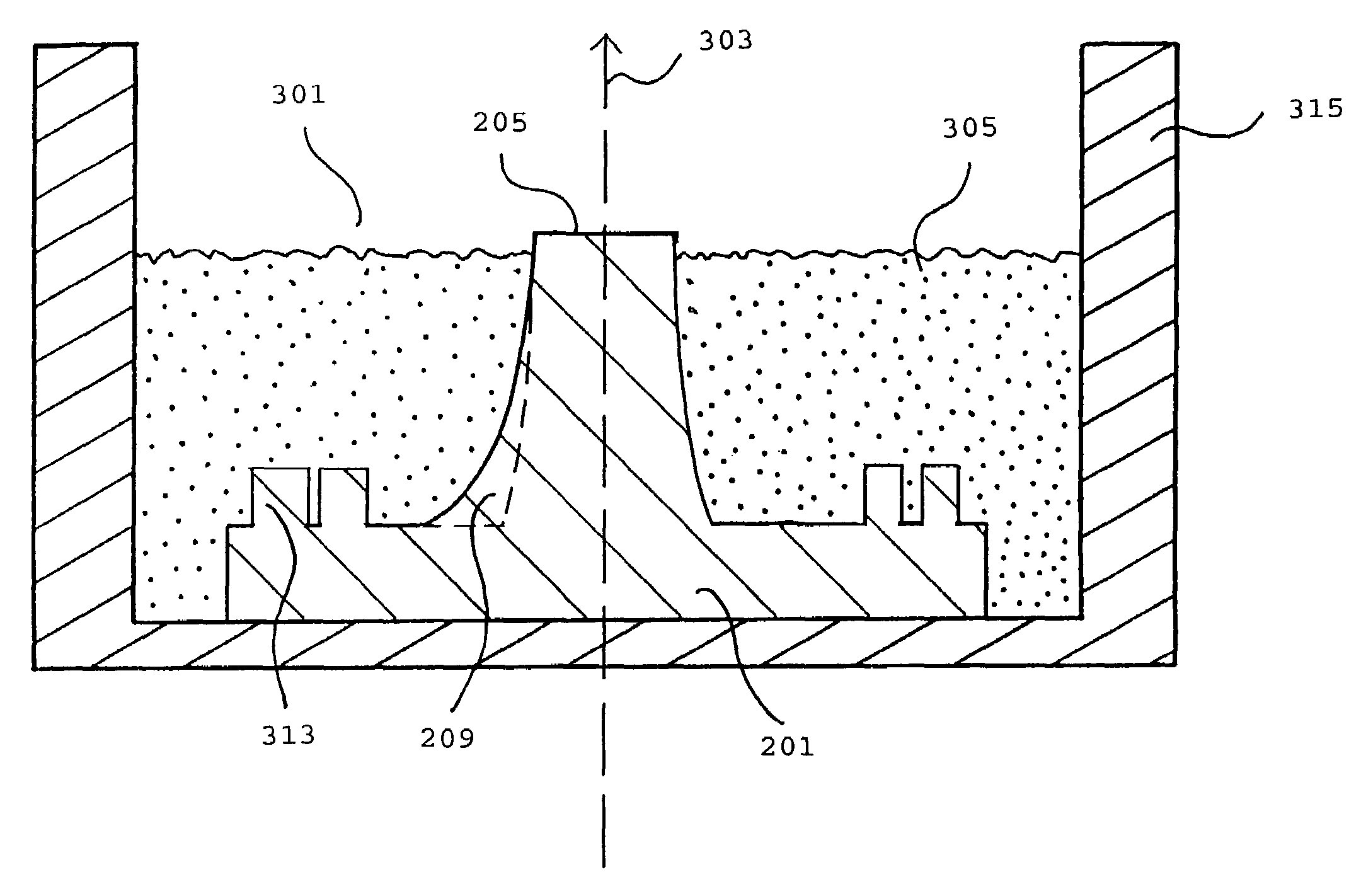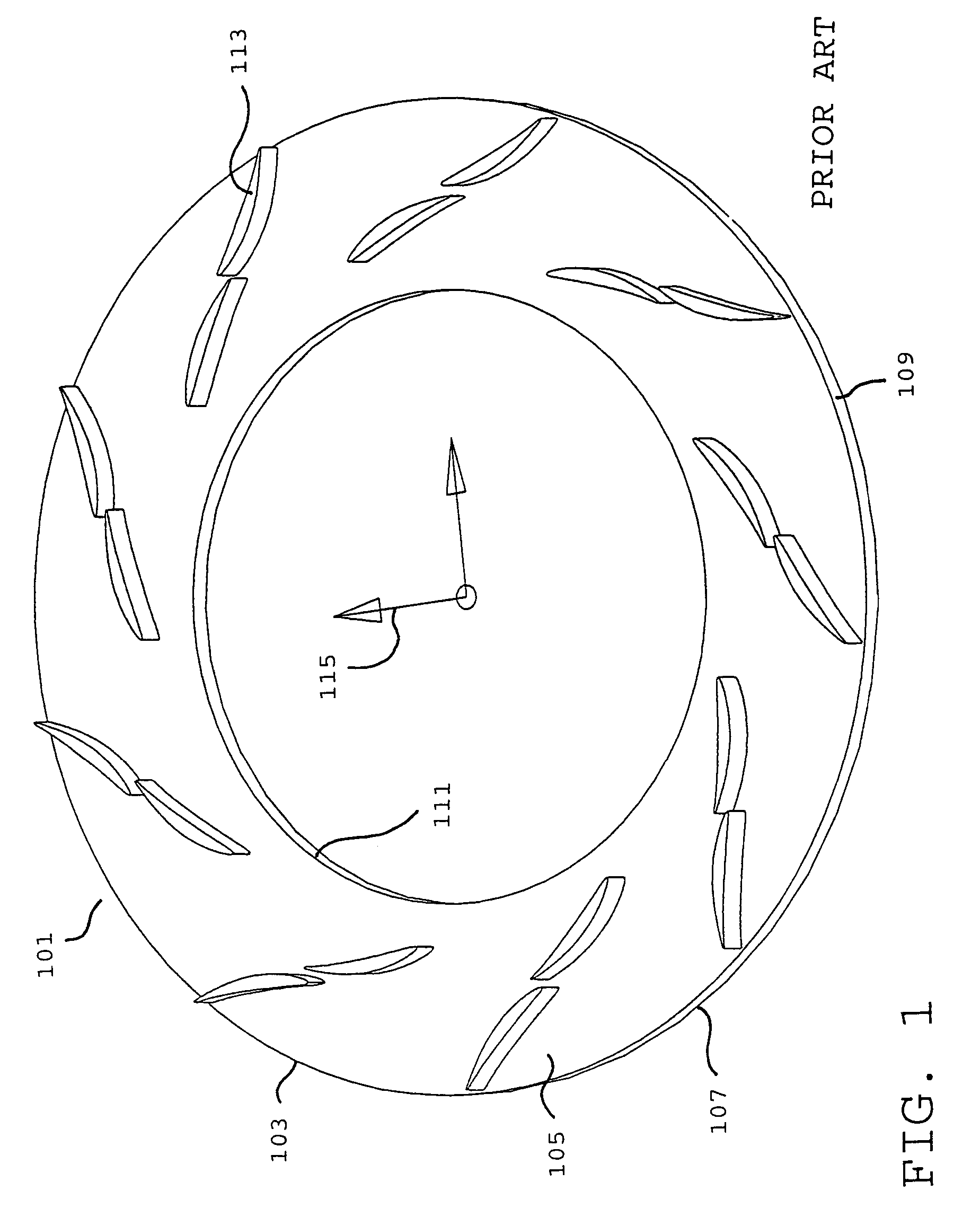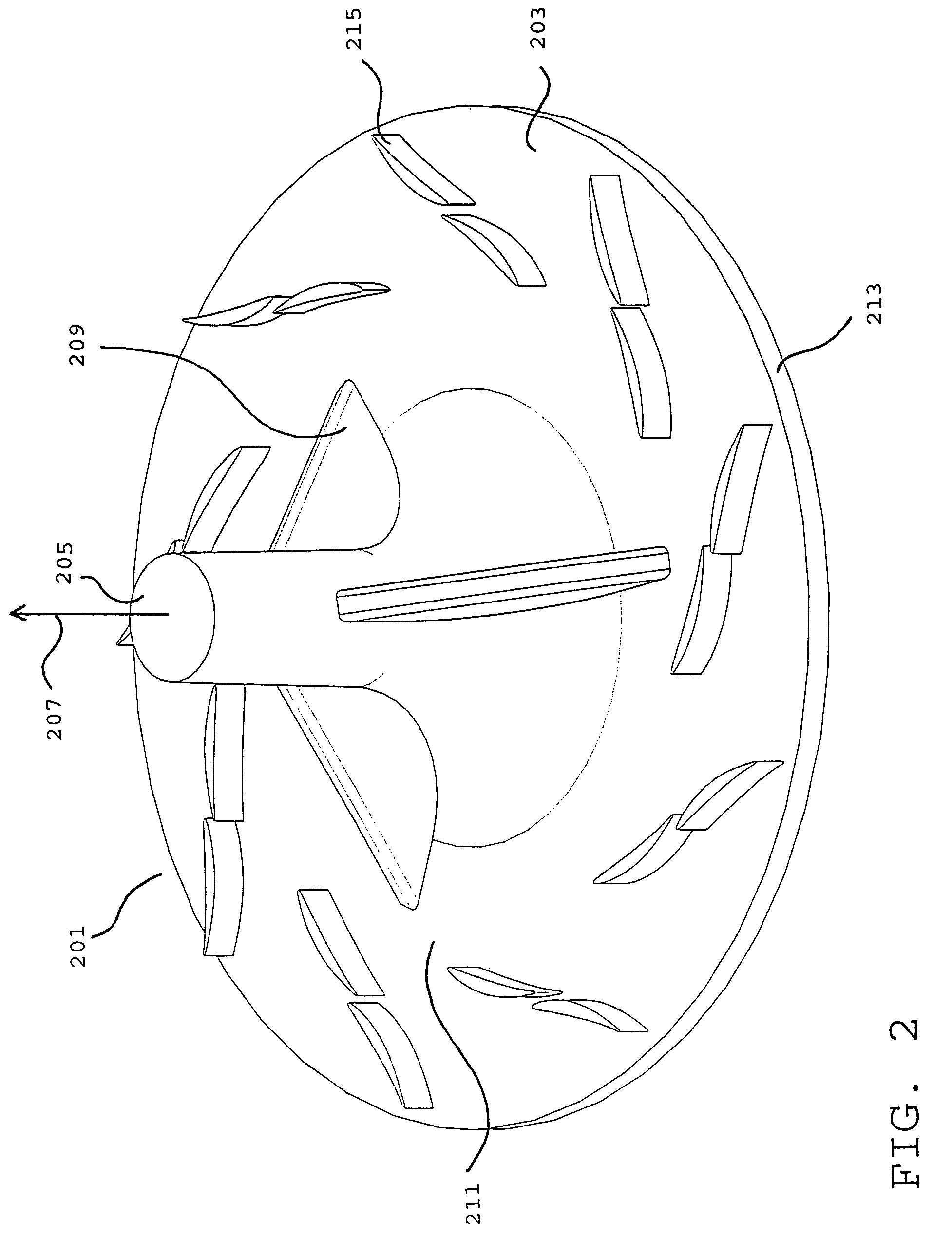Method for the manufacture of a vaned diffuser
a vaned diffuser and manufacturing method technology, applied in the direction of forging/pressing/hammering equipment, foundry patterns, forging moulding equipment, etc., can solve the problem of producing the required high-quality surface, achieve high surface quality, facilitate casting, machining, and finishing, and facilitate the delivery of molten metal
- Summary
- Abstract
- Description
- Claims
- Application Information
AI Technical Summary
Benefits of technology
Problems solved by technology
Method used
Image
Examples
Embodiment Construction
[0029]For the purpose of illustrating the method steps of the present invention, FIG. 1 illustrates a vaned diffuser 101, which is known in the prior art to be produced by machining from solid metal, but production of which is described herein according to the method of the present invention. The vaned diffuser comprises a essentially disc-shaped portion 103, having an approximately flat upper surface 105 and an approximately flat lower surface 107, which is essentially parallel to the upper surface, and also having an outer circumferential edge 109 and an inner circumferential edge 111. From the upper surface 105 of the disc, a plurality of vanes 113 extend approximately perpendicularly from said surface 105. The vanes 113 are positioned, in the assembled turbocharger, to accept high velocity air from a compressor wheel located approximately within the inner circumferential edge 111 of the diffuser, and rotating about a central perpendicular axis 115.
[0030]Referring now to FIG. 2, ...
PUM
| Property | Measurement | Unit |
|---|---|---|
| melting point | aaaaa | aaaaa |
| diameter | aaaaa | aaaaa |
| velocity | aaaaa | aaaaa |
Abstract
Description
Claims
Application Information
 Login to View More
Login to View More - R&D
- Intellectual Property
- Life Sciences
- Materials
- Tech Scout
- Unparalleled Data Quality
- Higher Quality Content
- 60% Fewer Hallucinations
Browse by: Latest US Patents, China's latest patents, Technical Efficacy Thesaurus, Application Domain, Technology Topic, Popular Technical Reports.
© 2025 PatSnap. All rights reserved.Legal|Privacy policy|Modern Slavery Act Transparency Statement|Sitemap|About US| Contact US: help@patsnap.com



